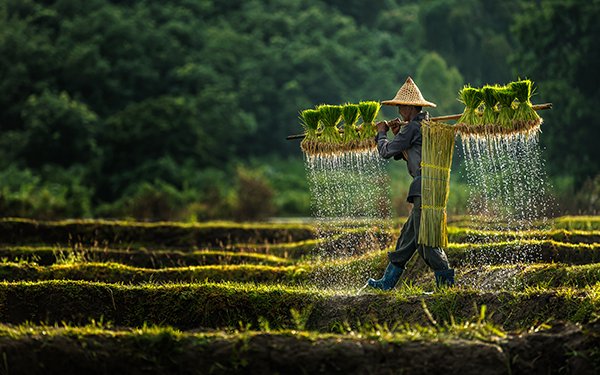Gaining a better understanding the role of tropical multiple cropping
Study shows how global land use models can be made more accurate.
Multiple cropping, the simultaneous cultivation of several crop species in space or time, is a widespread global agricultural practice. However, it is not adequately included in existing land use models. This is a problem because such models are playing an increasingly important role in the design of sustainable land use policies. A study conducted at the University of Augsburg shows how such models could be improved. Whether in political decisions on climate change or in the planning of protected areas, computer-based modelling of land use has become increasingly important in recent years. Such computer models help us understand how we use land worldwide—for agriculture, forests, or energy production, for example—and how political decisions or environmental changes affect it. The continuous development of such models helps to further strengthen their significance and applicability. Currently, most land use models have a weakness: they assume that agriculture is conducted in monocultures and neglect multiple crops, that is, when several crop species are grown in the same area or in temporal succession, for example through intercropping, agroforestry, or even crop rotation and double cropping. However, multiple cropping is globally widespread and differs greatly from monocultures in its impact on the environment and society. Prof. Katharina Waha, together with an international consortium of researchers, has investigated how multiple cropping can be better taken into account and thus how land use models can be made more accurate. Waha holds the Chair of Climate Resilience of Cultural Ecosystems at the University of Augsburg. The results of her study have just been published in the journal Communications Earth & Environment, a publication from the Nature portfolio. “In our study, we show that several key processes remain either partially addressed or entirely absent in current land use models. These include, for example, carry-over effects between seasons, biological above- and below-ground plant interactions, and microclimates in synchronous multiple cropping systems,” explains Waha. This creates distortions in the models. The researchers also make specific suggestions for improvement: First, existing data should be used, such as data on land area, cultivation intensity, and the type of multiple crops. In addition, targeted data should be collected, and independent local and regional models should be integrated into larger ones. In this way, models can be scaled up, and their significance strengthened. “With our recommendations, we see the potential to decrease model error and increase the applicability of the models,” says Waha. “We hope that this will contribute to better integration of multiple cropping into future decisions on climate and land use policy, for example when it comes to food systems.” This is because multiple cropping is considered a nature-based approach to diversifying and intensifying sustainable agriculture, with benefits including the preservation of biodiversity. With more precise models, the researchers want to enable more accurate political decisions: “Ultimately, our efforts aim to address the core question of the role that multiple cropping systems currently play – and could potentially play – in ensuring sustainable food security now and in the future,” explains Waha. Waha, K., Folberth, C., Biemans, H. et al. Land use modelling needs to better account for multiple cropping to inform pathways for sustainable agriculture. Communications Earth & Environment vol. 6, 756 (2025). https://doi.org/10.1038/s43247-025-02724-0 https://www.nature.com/articles/s43247-025-02724-0 cg
Email:
katharina.waha@uni-auni-a.de ()
Email:
michael.hallermayer@presse.uni-augsburgpresse.uni-augsburg.de ()

Distorted models
Better models, better decisions
Further reading:
Wissenschaftlicher Kontakt
Medienkontakt
